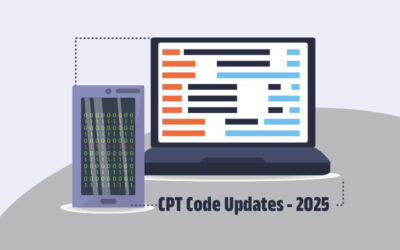Acute abdominal pain (AAP), characterized by pain arising from the abdominal area is ranked as the top common causes for referral to an emergency room and non-trauma-related hospital admissions. It is defined as continuous or intermittent abdominal discomfort for at least six months. The type of pain can be mild or severe and starts suddenly and gets worse quickly. Typical symptoms include severe pain, persistent nausea and vomiting, fever, bloody stools, weight loss, skin that appears yellow and severe tenderness of abdomen (when touched). Reports suggest that acute abdominal pain contribute to about 8 percent of the total emergency department visits in the United States. The diagnosis and treatment of AAP involves a collaborative effort, which often begins in the emergency department (ED). Emergency department physicians treating this condition must document the diagnosis and medical procedures with accurate medical codes. Medical coding outsourcing is an option worth considering as this can help physicians ensure accurate and timely claim filing and reimbursement.
Causes of Acute Abdominal Pain
There are several causes for abdominal pain which include swelling or infection in the abdomen or organ, allergic reaction to food, constipation, irritable bowel syndrome (IBS), Crohn’s disease, acid reflux and blockage in the bowels. Severe abdominal pain can also occur if you are lactose intolerant or have ulcers or pelvic inflammatory diseases like hernia, gallstones, kidney stones, endometriosis, gastroesophageal reflux disease (GERD) and appendicitis.
Diagnosis of this condition involves physicians making a detailed evaluation to identify the root cause of pain and performing several diagnostic tests such as X-ray, CT scan, MRI scan, stool or urine tests, blood tests, endoscopy and barium swallows or enemas. Treatment modalities for this condition may depend on the specific causes and type of pain symptoms. Medications may be prescribed to reduce pain, treat infections and manage severe symptoms like constipation. Surgical procedures will be recommended to treat various inflammatory diseases like appendicitis or a blockage in your bowels.
Emergency room medical coding involves the use of specific ICD-10 codes and CPT codes to document different emergency conditions, including acute abdominal pain. The following medical codes are used –
ICD-10 Codes
R10 – Abdominal and pelvic pain
R10.0 – Acute abdomen
- R10.1 – Pain localized to upper abdomen
- R10.10 – Upper abdominal pain, unspecified
- R10.11 – Right upper quadrant pain
- R10.12 – Left upper quadrant pain
- R10.13 – Epigastric pain
R10.2 – Pelvic and perineal pain
R10.3 – Pain localized to other parts of lower abdomen
- R10.30 – Lower abdominal pain, unspecified
- R10.31 – Right lower quadrant pain
- R10.32 – Left lower quadrant pain
- R10.33 – Periumbilical pain
R10.8 – Other abdominal pain
R10.81 – Abdominal tenderness
- R10.811 – Right upper quadrant abdominal tenderness
- R10.812 – Left upper quadrant abdominal tenderness
- R10.813 – Right lower quadrant abdominal tenderness
- R10.814 – Left lower quadrant abdominal tenderness
- R10.815 – Periumbilic abdominal tenderness
- R10.816 – Epigastric abdominal tenderness
- R10.817 – Generalized abdominal tenderness
- R10.819 – Generalized abdominal tenderness, unspecified site
R10.82 – Rebound abdominal tenderness
- R10.821 – Right upper quadrant rebound abdominal tenderness
- R10.822 – Left upper quadrant rebound abdominal tenderness
- R10.823 – Right lower quadrant rebound abdominal tenderness
- R10.824 – Left lower quadrant rebound abdominal tenderness
- R10.825 – Periumbilic rebound abdominal tenderness
- R10.826 – Epigastric rebound abdominal tenderness
- R10.827 – Generalized rebound abdominal tenderness
- R10.829 – Generalized rebound abdominal tenderness, unspecified site
R10.83 – Colic
R10.84 – Generalized abdominal pain
R10.9 – Unspecified abdominal pain
CPT Codes
- 74150 – CT of Abdomen, without contrast
- 74160 – CT of Abdomen, with contrast
- 74170 – CT of Abdomen, without contrast, followed by re-imaging with contrast
- 74181 – MRI of Abdomen, without contrast
- 74182 – MRI of Abdomen, with contrast
- 74183 – MRI of Abdomen, without contrast, followed by re-imaging with contrast
- 74175 – Computed tomographic angiography, abdomen, with contrast material(s), including non-contrast images, if performed, and image post processing
- 74185 – Magnetic resonance angiography, abdomen, without or with contrast
- 72192 – CT of Pelvis, without contrast
- 72193 – CT of Pelvis, with contrast
- 72194 – CT of Pelvis without contrast, followed by re-imaging with contrast
- 72195 – MRI of Pelvis, without contrast
- 72196 – MRI of Pelvis, with contrast
- 72197 – MRI of Pelvis, without contrast, followed by re-imaging with contrast
- 72191 – Computed tomographic angiography, pelvis, with contrast material(s), including non-contrast images, if performed, and image post processing
- 72198 – Magnetic resonance angiography, pelvis, without contrast, followed by re-imaging with contrast
- 74176 – CT of Abdomen and Pelvis, without contrast
- 74177 – CT of Abdomen and Pelvis, with contrast
- 74178 – CT of Abdomen and Pelvis, without contrast, followed by re-imaging with contrast
- 74261 – Diagnostic CT Colonography without contrast
- 74262 – Diagnostic CT Colonography with contrast including non-contrast images if performed
- 74263 – Screening CT Colonography including image post processing
E/M Codes for Emergency Department
The E/M code set for the emergency department includes five different levels of service based on the specific nature of the condition to reveal the amount of history obtained, testing required, diagnostic imaging tests performed and complexity of medical decision making. The following E/M codes are used –
- 99281 – Emergency department visit for the evaluation and management of a patient, which requires these 3 key components: a problem focused history; a problem focused examination; and straightforward medical decision making. Counseling and/or coordination of care with other providers or agencies are provided consistent with the nature of the problem(s) and the patient’s and/or family’s needs. Usually, the presenting problem(s) are self limited or minor.
- 99282 – Emergency department visit for the evaluation and management of a patient, which requires these 3 key components: an expanded problem focused history; an expanded problem focused examination; and medical decision making of low complexity. Counseling and/or coordination of care with other providers or agencies are provided consistent with the nature of the problem(s) and the patient’s and/or family’s needs. Usually, the presenting problem(s) are of low to moderate severity.
- 99283 – Emergency department visit for the evaluation and management of a patient, which requires these 3 key components: an expanded problem-focused history; an expanded problem-focused examination; and medical decision making of moderate complexity. Counseling and/or coordination of care with other physicians, other qualified health care professionals, or agencies are provided consistent with the nature of the problem(s) and the patient’s and/or family’s needs. Usually, the presenting problem(s) are of moderate severity.
- 99284 – Emergency department visit for the evaluation and management of a patient, which requires these 3 key components: a detailed history; a detailed examination; and medical decision making of moderate complexity. Counseling and/or coordination of care with other providers or agencies are provided consistent with the nature of the problem(s) and the patient’s and/or family’s needs. Usually, the presenting problem(s) are of high severity, and require urgent evaluation by the physician but do not pose an immediate significant threat to life or physiologic function.
- 99285 – Emergency department for the evaluation and management of a patient, which requires these 3 key components: a comprehensive history; a comprehensive examination; and medical decision making of high complexity. Counseling and/or coordination of care with other physicians, other qualified health care professionals, or agencies are provided consistent with the nature of the problem(s) and the patient’s and/or family’s needs. Usually, the presenting problem(s) are of high severity and pose an immediate significant threat to life or physiologic function.
The E/M code set for the emergency department does not assign any typical time due to multi-tasking performed by emergency room physicians. Medicare requires that modifier-25 always be appended to the ED E/M code (99281-99285) when provided on the same date as a diagnostic medical/surgical and/or therapeutic medical/surgical procedure(s).
Medical coding for acute abdominal pain (AAP) in an emergency department can be a challenging process. For accurate and timely medical billing and claims submission, healthcare practices can outsource their medical coding tasks to an established medical billing company that provides the services of AAPC-certified coding specialists.




